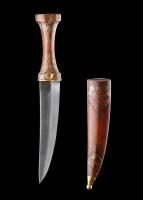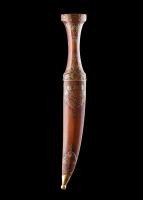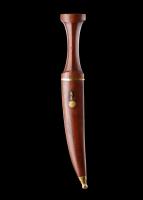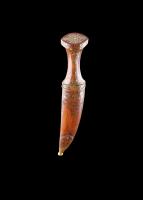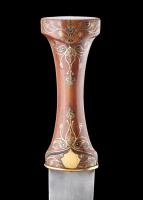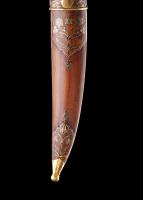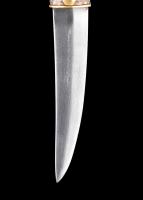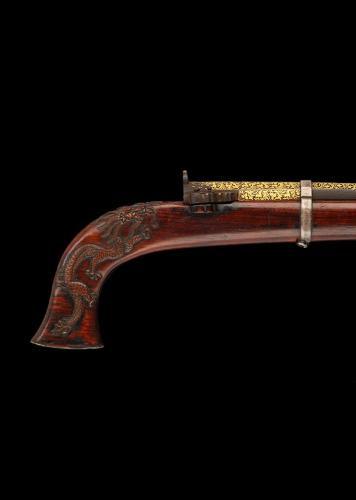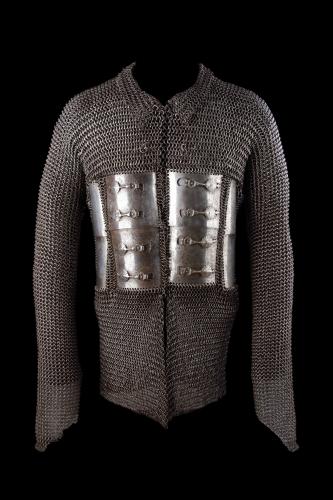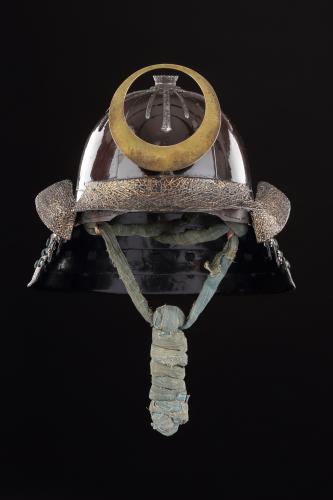
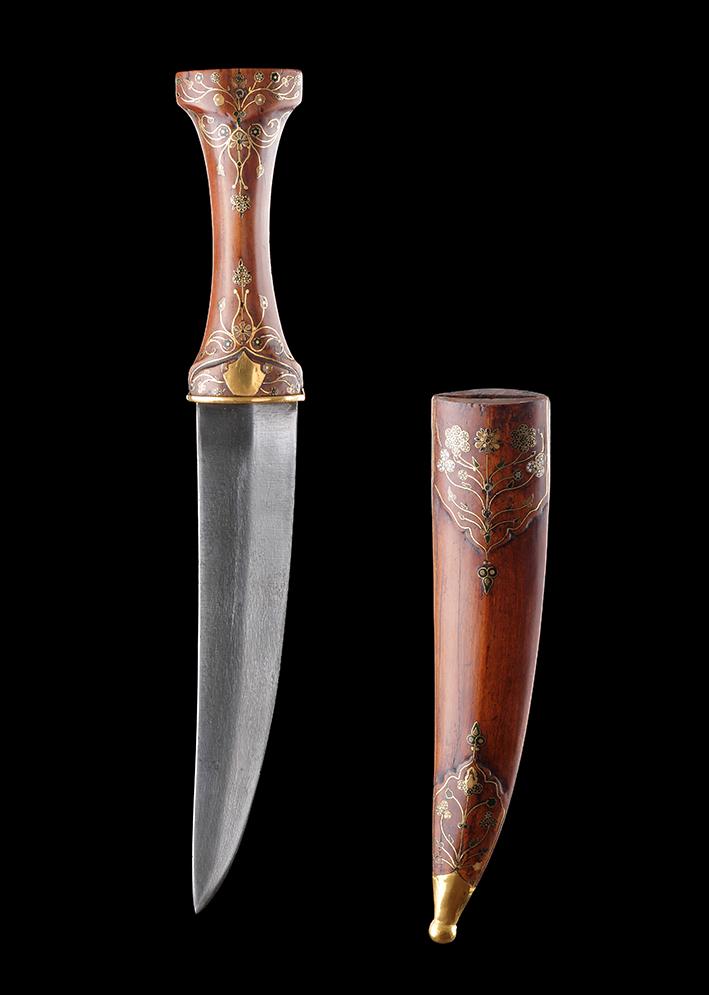
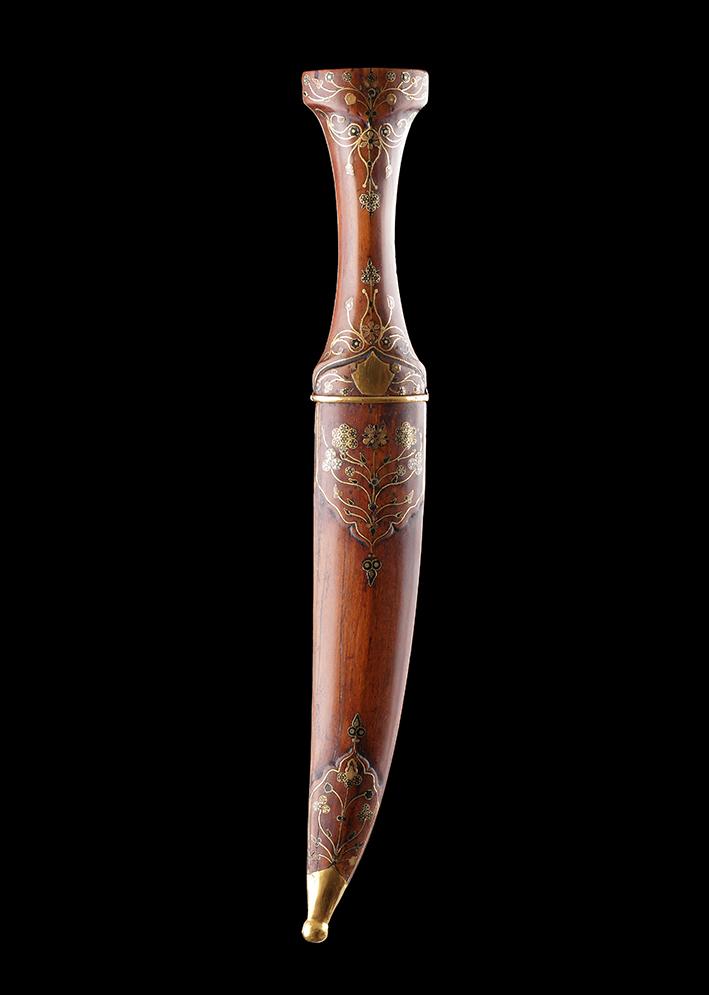
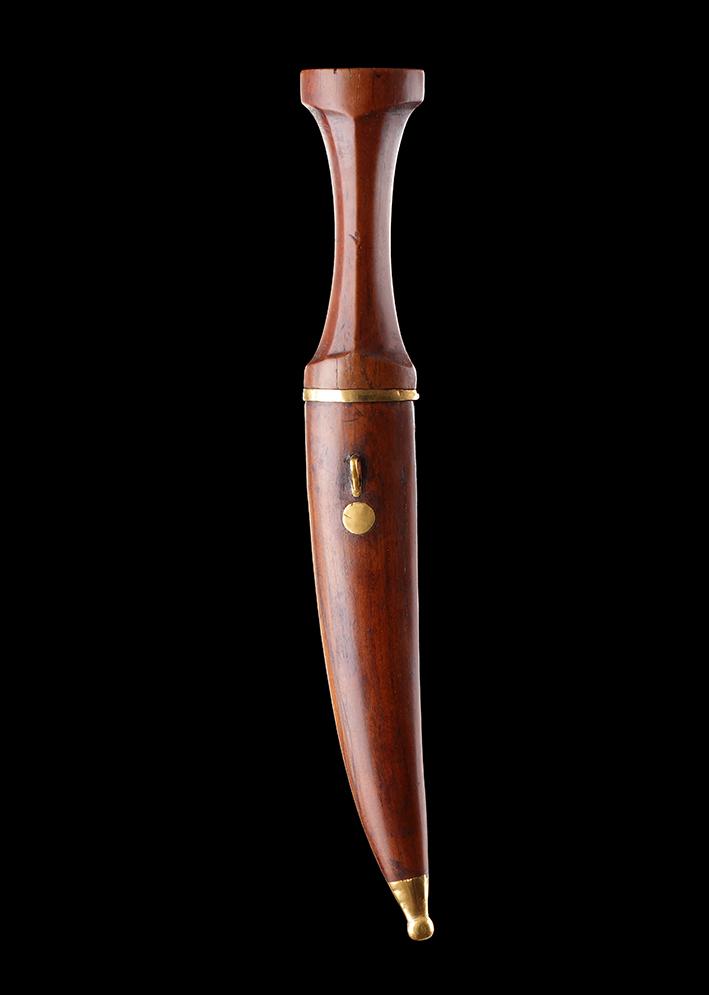
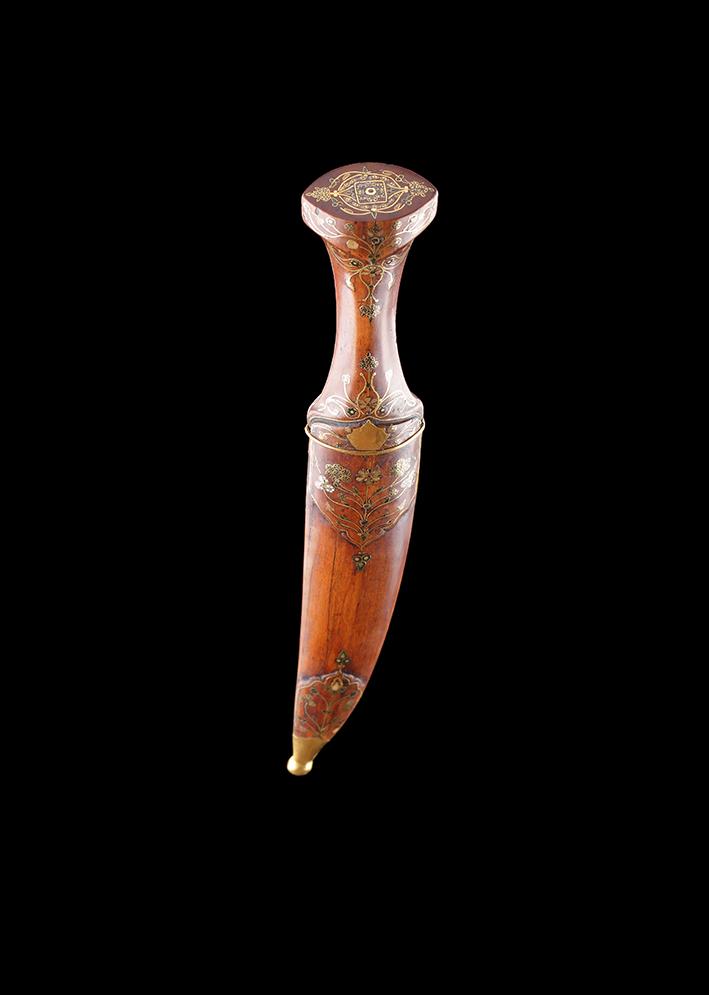
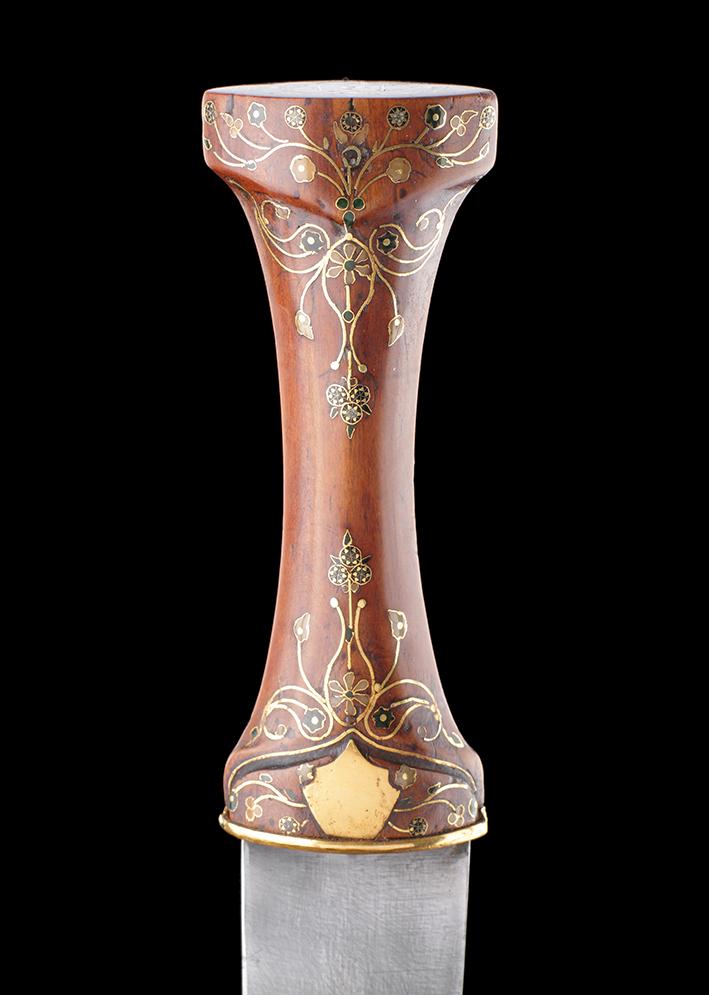
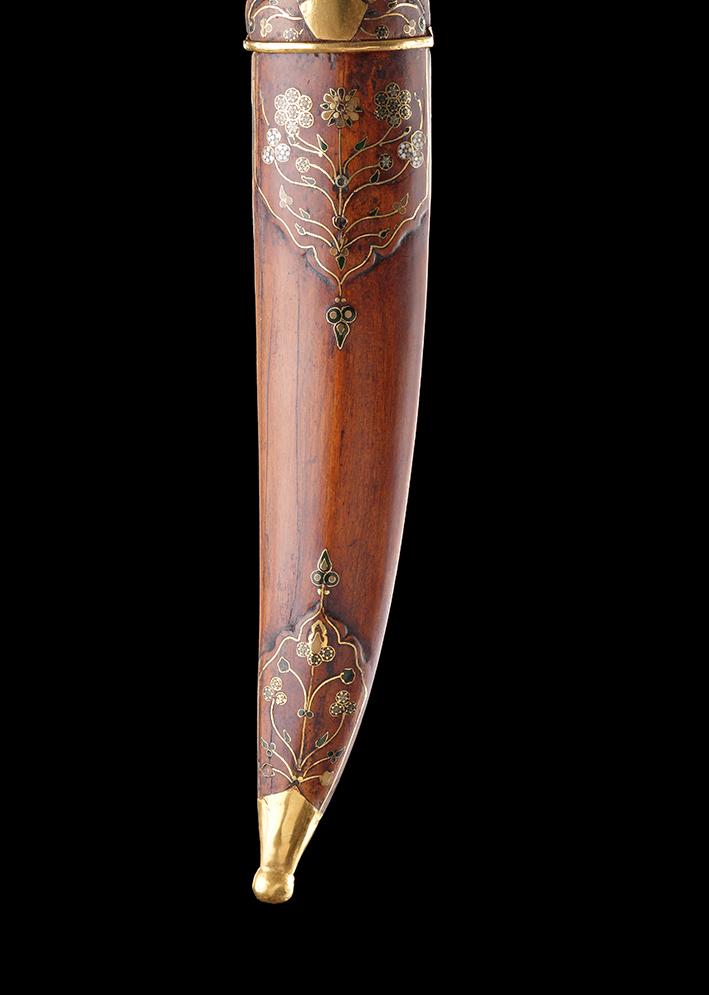
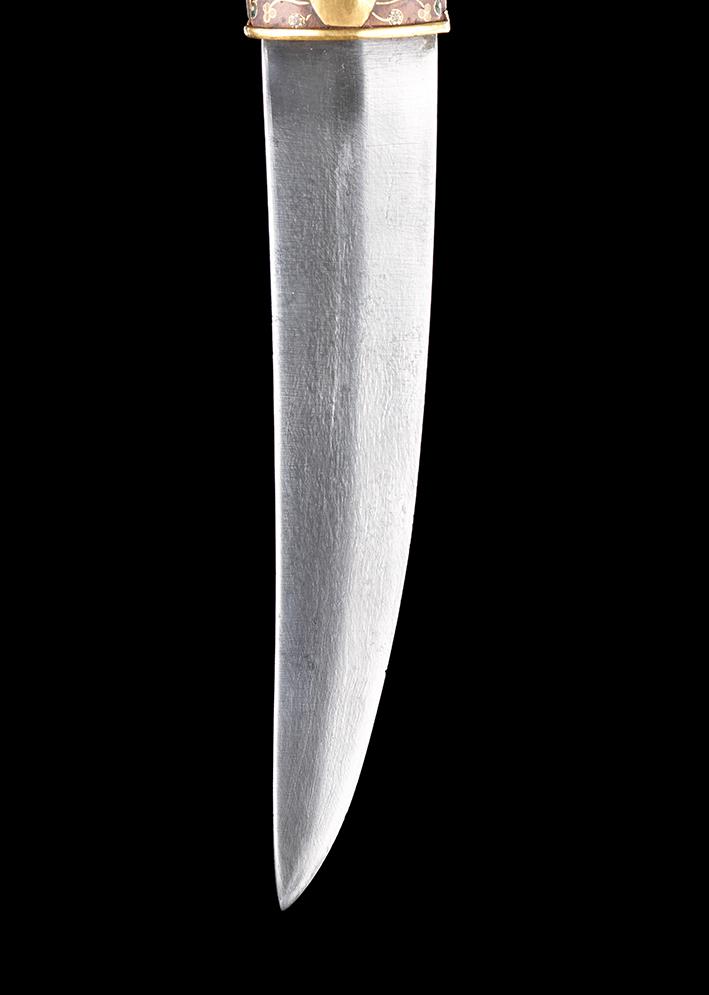
Price on application
This object is eligible for a Certificate of BADA Provenance
The BADA Standard
- Since 1918, BADA has been the leading association for the antiques and fine art trade
- Members are elected for their knowledge, integrity and quality of stock
- Our clients are protected by BADA’s code of conduct
- Our dealers’ membership is reviewed and renewed annually
- Bada.org is a non-profit site: clients deal directly with members and they pay no hidden fees
Khatamkari Dagger.
Place of Origin: Turkey.
Date: 17th Century.
This Ottoman dagger of great rarity is well preserved, retaining the majority of its intricate khatamkari decoration and a short blade of elegant form.
The rosewood hilt is of shallowly-waisted form and delicately inlaid with gold to depict a motif of curving tendrils that culminate in stylised blossoms made from khatamkari roundels, as well as micromosaics of stained ivory, resin, and ebony tesserae in bluish-white, dark green, peach and black designed to present the form of pointed stars.
As the catalogue note from a Sotheby’s entry well explains, khatamkari “is a technique that originated in Persia, most probably Shiraz and Isfahan, and travelled throughout the Middle East and India (…) Very fine ivory and bone ‘baguettes’ are sliced and placed and set into fine cavities, usually in a wooden object.”[1]
The flat end-surface of the pommel is decorated with khatamkari florets in a symmetrical design that shows a central blossom enclosed within a square and further patterns including a circular arrangement of gilt rhombuses and curved lines of vine tendrils in green. The hilt’s collar depicts similar motifs, with a later raised gilt panel at the centre.
The scabbard is decorated en suite, two branched arrangements of floral khatamkari patterns occupying an ogee-shaped panel at each end of the scabbard, the edges of each panel raised and demarcated through careful carving and enhanced with curving gold lines. The chape includes an integral spherical finial, and on the scabbard’s reverse face, a small loop for suspension is fixed to the wooden surface above a gilt circular panel. The double-edged steel blade is characteristic of these rare daggers, being of short length and exhibiting a very slight curve which increases towards the blade’s tip.
Such examples as this belong to a small group of Turkish daggers which rarely become available for sale. One comparable dagger was sold at Sotheby’s in 2007 (Lot 152),[2] exhibiting essentially the same form as our own. Even in museum collections, this weapon-type is rarely found, though a small group are preserved in the Museumslandschaft Hessen Kassel in Germany (Inventory Nos. KP B II.617 & KP B XVII.22),[3] subsequently published in a rare German catalogue on Ottoman weaponry.[4]
Given the decorative quality of our own example, it is likely – as was the case for the khatamkari scribe’s box cited above and in the footnote below – to have been made as a unique commission for a person of significant importance and taste.
[1] https://www.sothebys.com/en/auctions/ecatalogue/2016/arts-islamic-world-l16220/lot.161.html. The object there described is comparable to our own for its specific use of khatamkari decoration.
[2] https://www.sothebys.com/en/auctions/ecatalogue/2007/arts-of-the-islamic-world-l07220/lot.152.html
[3] https://datenbank.museum-kassel.de/200351/0/0/0/s17/0/100/objekt.html; https://datenbank.museum-kassel.de/191191/0/0/0/s19/0/100/objekt.html.
[4] Löwe und Halbmond, Ein Prunkzelt und Waffen aus dem Osmanischen Reich in Schloss Friedrichstein, Petersberg, 2012, Catalogue Numbers 39 & 42, pp. 131-133.
This object incorporates old ivory and has been registered with Defra
Dimensions
Overall: 280mm (11 inches)Stock number
316The BADA Standard
- Since 1918, BADA has been the leading association for the antiques and fine art trade
- Members are elected for their knowledge, integrity and quality of stock
- Our clients are protected by BADA’s code of conduct
- Our dealers’ membership is reviewed and renewed annually
- Bada.org is a non-profit site: clients deal directly with members and they pay no hidden fees


